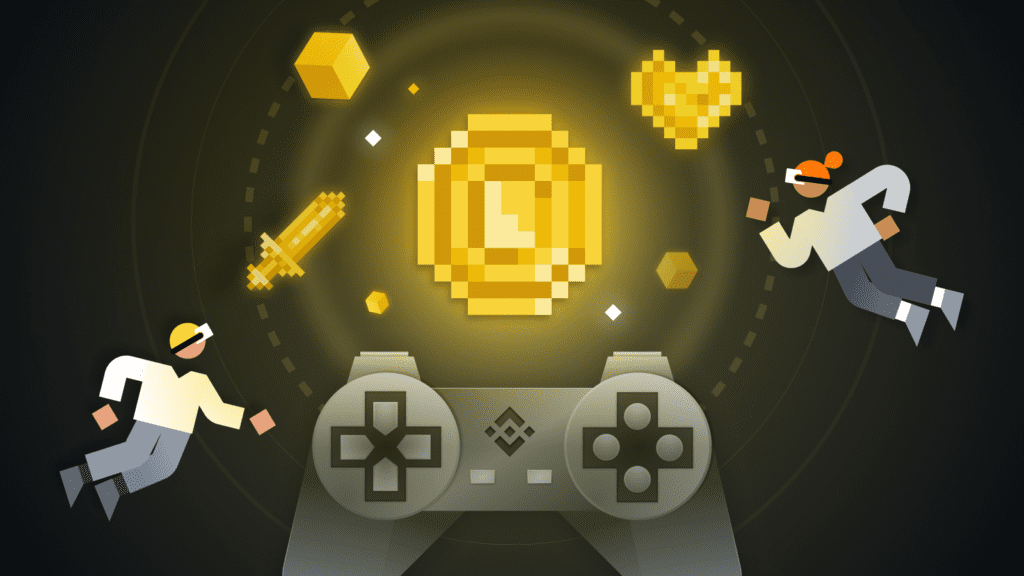The gaming industry is undergoing a revolutionary shift with the economics of crypto gaming. By integrating blockchain technology, this innovative model combines entertainment with financial opportunities, empowering players to earn, trade, and own digital assets securely. From tokens to rewards, crypto gaming is transforming the way players and developers interact with digital ecosystems.
Crypto Gaming – Where Finance Meets Fun
The gaming industry is no stranger to evolution. From arcade machines to console gaming and now cloud-based platforms, each era introduced new ways to play and connect. Crypto gaming, powered by blockchain technology, is the next frontier, redefining the economics of crypto gaming. It allows players to earn and trade digital assets that hold real-world value, making the gameplay experience both rewarding and financially significant.
At the heart of the economics of crypto gaming lies the unique model built on tokens and rewards, which empowers players and developers alike. Let’s dive into the mechanics driving this revolutionary space.
What Is Crypto Gaming?
Crypto gaming integrates blockchain technology into video games, creating decentralized ecosystems where players have verifiable ownership of in-game assets. Unlike traditional gaming models, crypto gaming ensures that players can monetize their skills and investments while enjoying the experience.
Core Features of Crypto Gaming
- True Ownership: Blockchain technology enables players to truly own their in-game items as NFTs.
- Decentralization: Players and developers operate within decentralized networks, minimizing control by central authorities.
- Interoperability: Some games allow assets like NFTs or tokens to be used across multiple titles, enhancing their utility.
Crypto gaming’s foundation lies in the “play-to-earn” (P2E) model, where gaming isn’t just entertainment—it’s an opportunity for economic empowerment.
Tokens in Crypto Gaming
Tokens serve as the lifeblood of crypto gaming, enabling transactions, governance, and rewards within the ecosystem. These digital assets vary in functionality but collectively underpin the economic systems of blockchain games.
Types of Tokens in Crypto Games
Utility Tokens
Used for in-game transactions such as purchasing items or unlocking features.
- Examples: $SAND (The Sandbox), $AXS (Axie Infinity)
Governance Tokens
Grant holders voting rights on game development and policy decisions, fostering decentralized communities.
- Example: $AXS holders in Axie Infinity influence key game updates.
Reward Tokens
Earned through gameplay achievements and often tradable for real-world value.
- Example: $SLP (Smooth Love Potion) in Axie Infinity, earned by winning battles.
Non-Fungible Tokens (NFTs)
Unique digital assets representing items, characters, or land within games.
- Example: Rare skins in Gods Unchained or plots in Decentraland.
How Rewards Work in Crypto Games
Rewards are the centerpiece of the P2E model, incentivizing players for their time, skill, and engagement. They come in various forms, including cryptocurrencies, NFTs, and exclusive access.
Mechanisms for Reward Distribution
- Quests and Achievements: Completing objectives earns players tokens or valuable items.
- Competitive Wins: Battling other players or AI yields token rewards.
- Staking and Passive Income: Players can lock their tokens in the game’s ecosystem to earn additional rewards.
- Marketplace Trading: Selling earned tokens or NFTs generates profit in external markets.
This rewards system represents a paradigm shift, turning players into stakeholders within the gaming economy.
The Economics Behind Crypto Gaming
Understanding the economic mechanics of crypto gaming reveals why this model is thriving. Blockchain ensures scarcity, utility, and transparency, all of which contribute to the value of tokens and NFTs.
Value Creation in Crypto Games
- Scarcity: Limited-edition NFTs or tokens drive demand, increasing value.
- Utility: Items and tokens with functional roles in games gain intrinsic worth.
- Speculation: Similar to cryptocurrencies, the perceived value of gaming tokens can skyrocket with market interest.
Revenue Streams for Developers
- Token Presales: Funding raised through early sales of game tokens.
- NFT Minting Fees: Players minting new items pay a fee, generating income for developers.
- Marketplace Transactions: A percentage of every sale goes to the game’s creators.
Economic Challenges
- Volatility: The fluctuating value of tokens can impact player earnings.
- Sustainability: Maintaining balance between rewards and token supply is critical.
- Over-Monetization Risks: Overemphasis on earnings can detract from the gaming experience.
Benefits for Players
Crypto gaming offers numerous advantages compared to traditional gaming models:
- Monetization Opportunities: Players earn tangible rewards for their efforts.
- Global Access: Anyone with internet access can participate in crypto gaming economies.
- Transparency and Security: Blockchain ensures fairness and eliminates asset duplication.
Challenges and Criticisms
Despite its potential, crypto gaming is not without its challenges.
- Environmental Concerns: High-energy blockchain operations raise sustainability issues.
- Regulatory Uncertainty: Governments worldwide grapple with defining crypto assets’ legality.
- Barriers to Entry: High initial costs for certain NFTs or tokens can discourage new players.
The Future of Crypto Gaming
The crypto gaming industry is poised for growth, with advancements in technology addressing current challenges. Eco-friendly blockchains and Layer 2 solutions promise lower energy consumption and faster transactions. Collaborations between blockchain developers and major gaming companies may soon bring crypto gaming to mainstream audiences.



